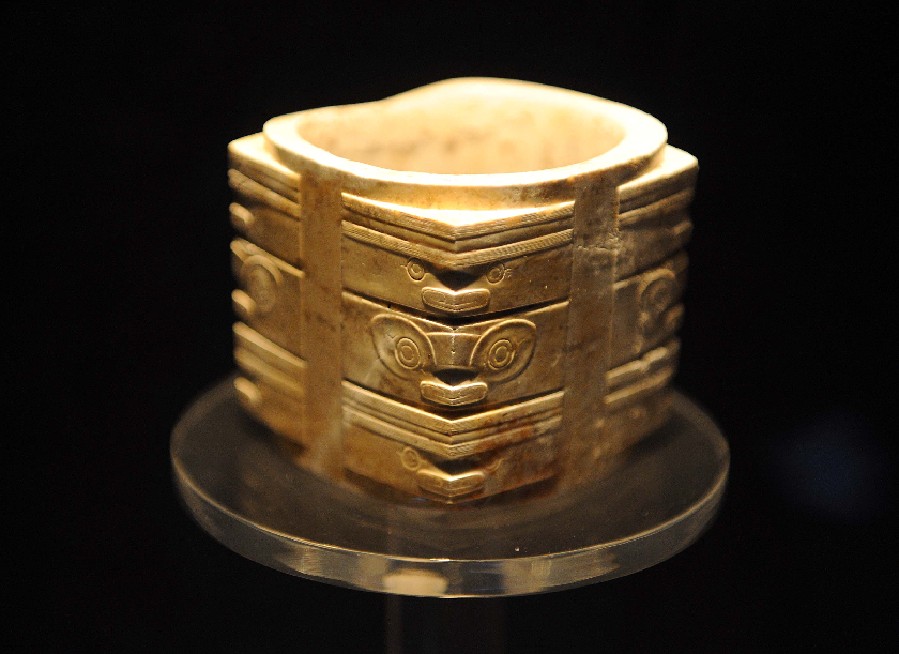Interview: China's Liangzhu "a site of primary importance" for study of early human civilization, says British archaeologist

Photo taken on March 9, 2011 shows a Cong, a rectangular jade with the round hole, which was serviced as a ritual object in ancient China, in a museum within the "Liangzhu national ruins park" in east China's Zhejiang Province. [Photo/Xinhua]
CAMBRIDGE, Britain, July 5 (Xinhua) -- The Liangzhu Archaeological Site in East China, a candidate for the UNESCO heritage status, is "a site of primary importance" for study of the early Chinese civilization and human civilization, said a leading British archaeologist.
Located on the plain of river networks on the outskirts of Hangzhou, capital of East China's Zhejiang province, the ancient city of Liangzhu dating to 3,300-2,300 BC offers profound and compelling evidence that Chinese civilization started 5,000 years ago, 1,000 years earlier than previously anticipated, said Colin Renfrew, retired professor of Archaeology at University of Cambridge and fellow of the British Academy, in an interview with Xinhua.
The jade artifacts, ways of irrigation and control of flooding by the dams excavated at the Liangzhu site all showed Liangzhu was "a highly organized society," thus taking the start of Chinese civilization 1,000 years earlier than the widely recognized civilization of Shang Dynasty around 1,500 BC, said Renfrew.
"So when we are talking of the origins of state society in China, we can think of the Liangzhu sort of 3,000 BC or a little bit later than that, instead of the Shang civilization around 1,500 BC. So it does definitely take 1,000 years earlier, the inception of organized society, complex society, or if you like the term, state society in China," he said.

